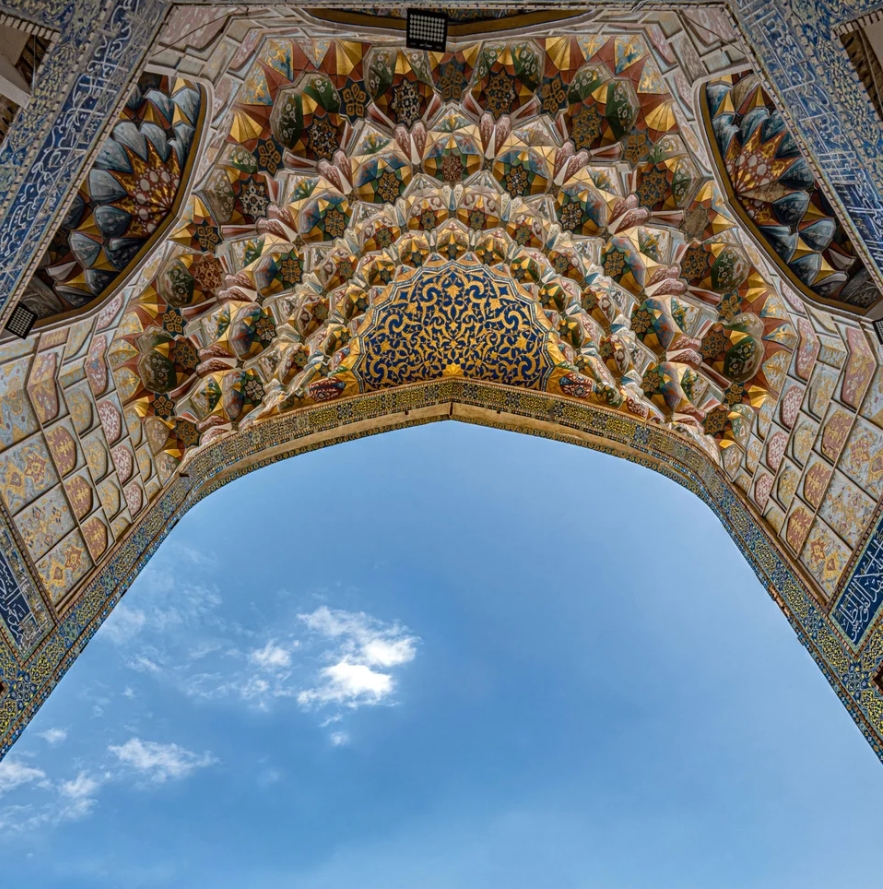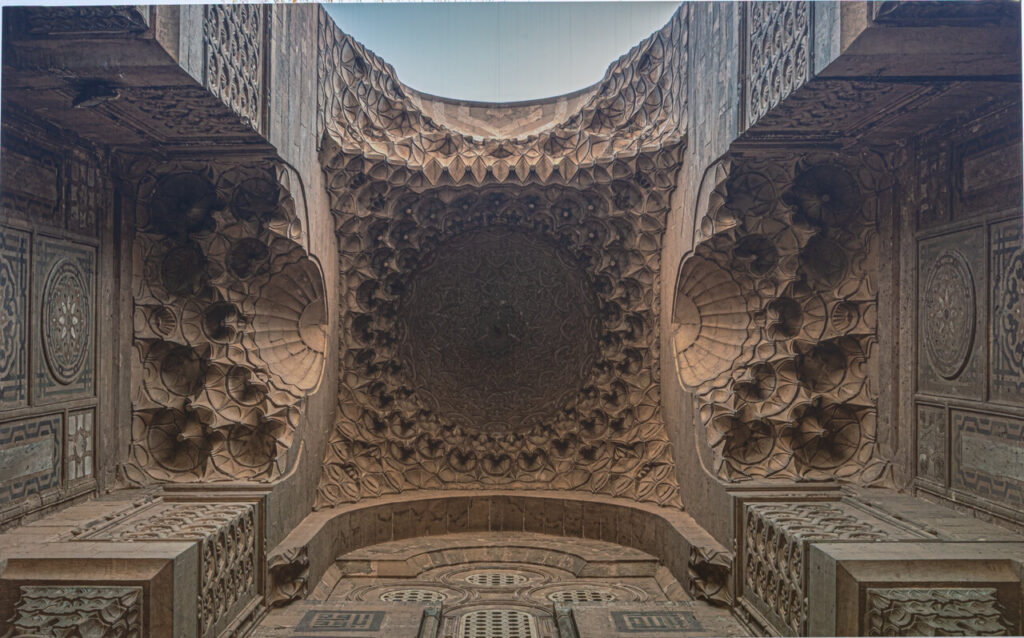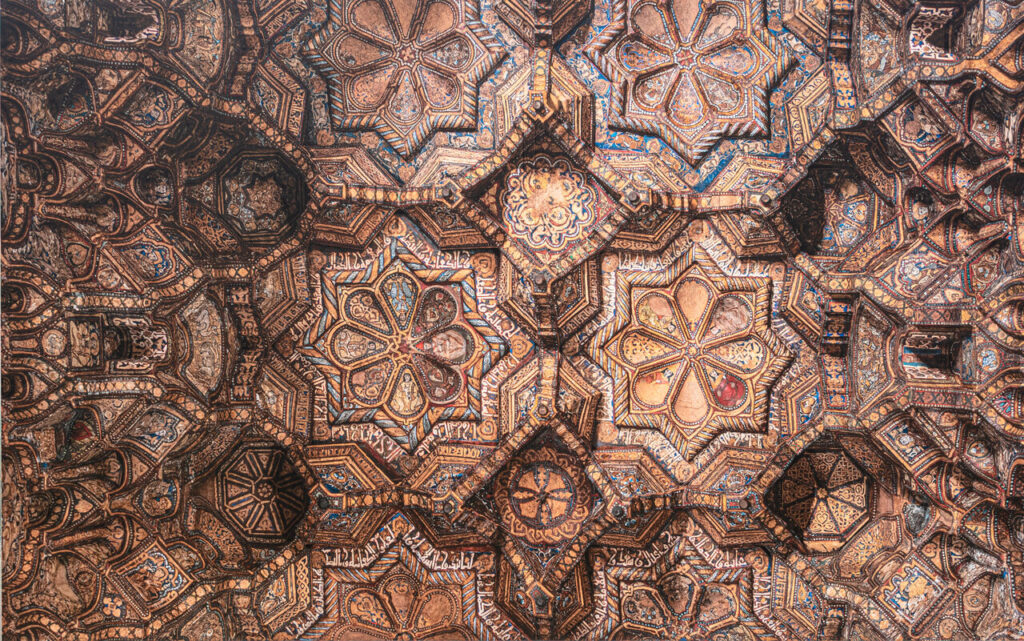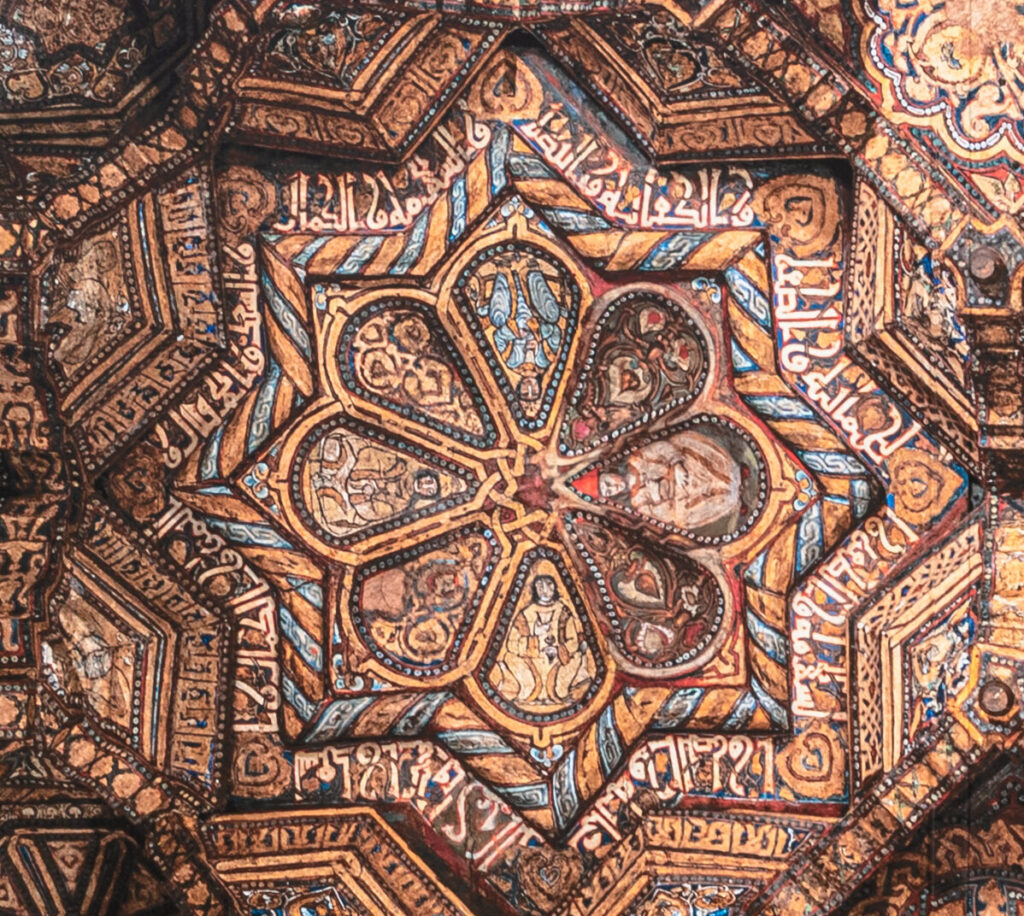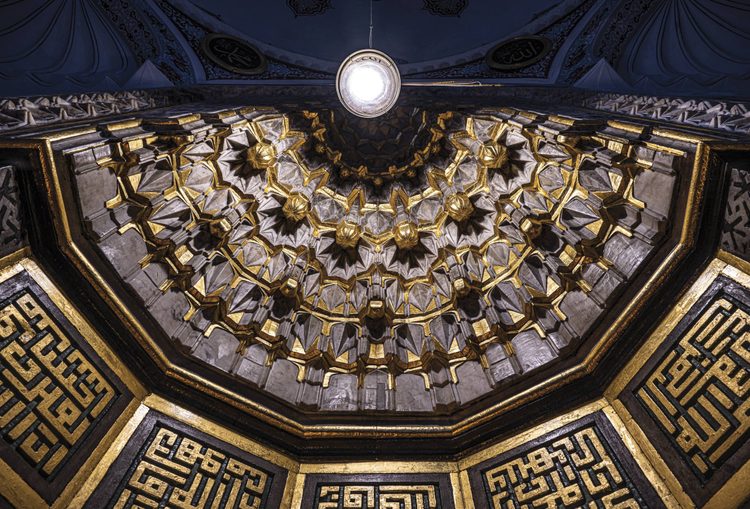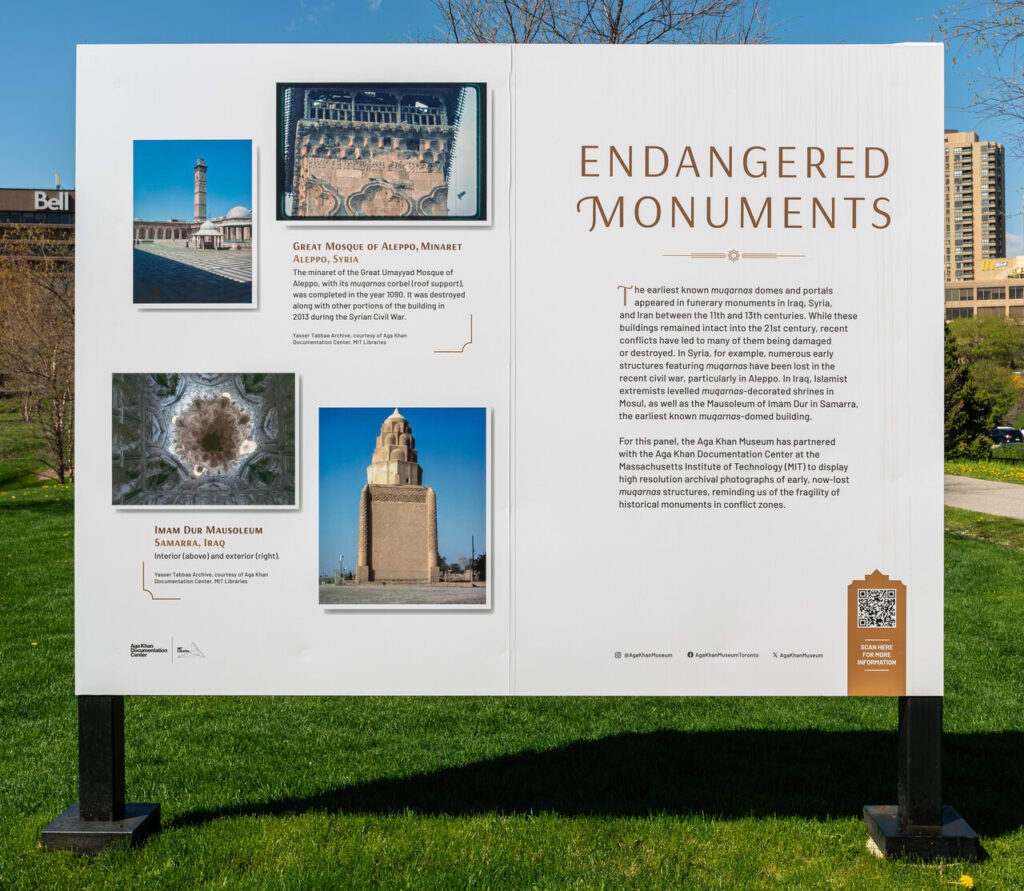The rain is ill-timed but not unwelcome as this year’s CONTACT Photography Festival takes me to the park of the formidably designed Aga Khan Museum. Winding around the building’s perimeter, along the park’s path, are double-sided panels, each with their own unique story to tell. While overcast, the clouds do nothing to hinder the work of Glenn McArthur’s outdoor installation. His contribution to this year’s festival is Muqarnas: Form and Light, a collection of images illustrating and appreciating what is the pinnacle of Islamic architectural design.
Used primarily in the Islamic world, muqarnas are a hallmark of architectural ornamentation, most found in domes, half-domes, vaults, and entrances of palaces, mosques, and other structures. Their designs are notable for their intricate, three-dimensional geometric and stalactite-like forms. Originating in the 10th century, the design gained popularity and rapidly spread throughout the Islamic empires. Their function is to serve as a transition between shifts in architectural structures, such as from a square base to a circular dome. However aesthetically, they dissolve solid surfaces into complex, visually faceted networks of cellular niches. Their designs reflect the Islamic artistic preference for abstraction, repetition, and the infinite – all core principles aligned with spiritual and metaphysical themes.
Glenn McArthur, Abd al-Aziz Khan Madrasa, Bukhara, Uzbekistan, from the series Muqarnas: Form and Light, 2021-ongoing. Courtesy of the artist
Having visited nine countries and over three hundred sites for his research and photography, McArthur conveys the opulence of these muqarnas by expertly capturing the light in a way to amplify their depth and dimension. Assistant Professor at OCAD U, McArthur has won several awards for his books on architecture and design and was recently presented with the Certificate of Recognition by the head of the Islamic Arts Festival at the Lahore Museum in Pakistan for this very exhibit.
The first panel features the muqarnas above a domed portal to the Al-Rifa’i Mosque in Cairo, Egypt. Completed in 1912, this stone muqarnas is designed in a Neo-Mamluk style, characterized by its tall portals, minarets, and domes, its creative floor plans, and its elaborate use of ablaq, a technique of alternating different colours of stones for visual effect.
Glenn McArthur, Muqarnas: Light and Form, 2024. Al-Rifa’s Mosque, Cairo Egypt, 1912, from the series Muqarnas: Form and Light, 2021-ongoing. Courtesy of Aga Khan Museum. Photo: Aly Manji
The design pulls the viewer in, and one cannot help but wonder if the stones are rotating like the heavens. It is believed by some that these architectural delineations are meant to represent the universe, its vacillating nature, and its relationship with God. And, indeed, it is not difficult to see why: the photograph conveys the vastness of the structure, almost as though the mosque were stretching before the viewer. To instill such awe through art and architecture truly speaks to the quality of the craftsmanship behind these muqarnas and the skill of McArthur’s photography.
Another panel is of the Capella Palatina in Palermo, Sicily, Italy. Completed in 1140, this wooden and painted muqarnas was commissioned by Norman Christian monarch Roger II. The intricately designed cells depict scenes of mythical creatures, gardens, animals, and court life. It is a rich blend of Fatimid, Byzantine, and North African influences and serves as a representation of Roger II’s multicultural ambitions. Around the cells are script in Kufic, an acknowledgement of the monarch’s power and prosperity.
Glenn McArthur, Muqarnas: Light and Form, 2024. Capella Palatina in Palermo, Sicily, Italy, 1140, from the series Muqarnas: Form and Light, 2021-ongoing. Courtesy of the Aga Khan Museum. Photo: Aly Manji
The photographs are so large one can step in close and view the detailed scenes. This detail features eight petals in an octa gram. Four men are painted in the top, bottom, left, and right petals with nuanced designs separating them in the interim petals. They are painted in an Arabic style.
Glenn McArthur, Muqarnas: Light and Form, 2024. Capella Palatina in Palermo, Sicily, Italy, 1140, detail, from the series Muqarnas: Form and Light, 2021-ongoing. Courtesy of the Aga Khan Museum. Photo: Aly Manji
The scenes do not depict any narrative; it is a random assortment of images with multicultural influences. But the muqarnas is an excellent synthesis of numerous artistic traditions that reflect the monarch’s governance and ambition.
What is striking about this exhibit that is no muqarnas are alike: each have their own characteristics and quality, yet they elicit awe and instill reflection in equal measures. An example would be the singular Amber Fort in Jaipur, India, created in the 17th century. The Shish Mahal, or the Hall of Mirrors, is embellished with a mosaic of convex mirrors and coloured foil, the intention for which was to coruscate in the candlelight at night. Or the Çoban Mustafa Paşa Complex, which features a strong Mamluk influence in the muqarnas carvings of black and gold.
Glenn McArthur, Muqarnas: Light and Form, 2024, Çoban Mustafa Paşa Complex, Gebze, Turkey, 1512-1520, from the series Muqarnas: Form and Light, 2021-ongoing. Courtesy of the Aga Khan Museum. Photo: Aly Manji
Further along the path, the project shifts into a photographic reconstruction of great ambition and intention. Entitled Endangered Monuments, this panel calls attention to the threatened and destroyed Islamic buildings, either at the hands of extremist iconoclasts or war. To truly emphasize their significance and fragility, the Aga Khan Museum partnered with the Aga Khan Documentation Centre at the Massachusetts Institute of Technology (MIT) to retrieve documented archival photographs of razed muqarnas structures. This panel honours and preserves their architectural splendor.
Documentation panel of the Great Mosque of Aleppo, Syria. Courtesy of the Aga Khan Museum. Photo: Aly Manji.
Crafted across centuries and regions, muqarnas not only adorned sacred and monumental spaces but also embodied the synthesis of artistic aesthetic, scientific knowledge, and spiritual symbolism that defines much of Islamic art. These intricate architectural features showcase a remarkable blend of mathematical precision, skilled craftsmanship, and visually stunning complexity that is truly worth admiring. Glenn McArthur’s expert eye captures their dimensionality and architectural distinction with the respect and reverence these structures deserve.
Elin MacRae
*Exhibition information: Glenn McArthur, Muqarnas: Light and Form, September 14, 2024 – September 14, 2025, Aga Khan Museum, 77 Wynford Drive, Toronto. Museum hours: Tue & Thu – Sun 10:30 am – 5:30 pm, Wed 10 am – 8 pm.
Part of CONTACT Photography Festival.

